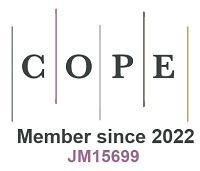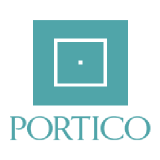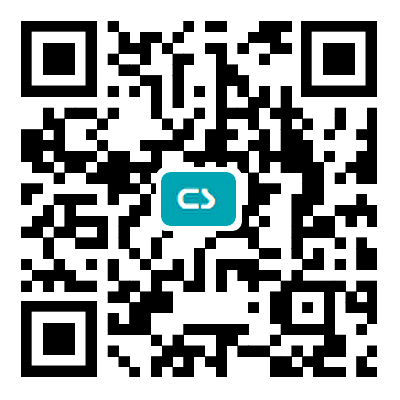REFERENCES
1. Budiman YP, Westcott SA, Radius U, Marder TB. Fluorinated aryl boronates as building blocks in organic synthesis. Adv Synth Cat 2021;363:2224-55.
2. Carden JL, Dasgupta A, Melen RL. Halogenated triarylboranes: synthesis, properties and applications in catalysis. Chem Soc Rev 2020;49:1706-25.
3. Shah S, Marandi P, Neelakandan PP. Advances in the supramolecular chemistry of tetracoordinate boron-containing organic molecules into organogels and mesogens. Front Chem 2021;9:708854.
4. Wang H, Jing C, Noble A, Aggarwal VK. Stereospecific 1,2-migrations of boronate complexes induced by electrophiles. Angew Chem Int Ed Engl 2020;59:16859-72.
5. Hirano K, Uchiyama M. Inter-element boration reactions of carbon-carbon multiple bonds via lewis-basic activation of boron reagents. Adv Synth Cat 2021;363:2340-53.
6. Sacramento M, Costa GP, Barcellos AM, Perin G, Lenardão EJ, Alves D. Transition-metal-free C-S, C-Se, and C-Te bond formation from organoboron compounds. Chem Rec 2021; doi: 10.1002/tcr.202100021.
7. Yang K, Song Q. Tetracoordinate boron intermediates enable unconventional transformations. Acc Chem Res 2021;54:2298-312.
8. Taniguchi T. Advances in chemistry of N-heterocyclic carbene boryl radicals. Chem Soc Rev 2021;50:8995-9021.
9. Maza RJ, Fernández E, Carbó JJ. Mapping the electronic structure and the reactivity trends for stabilized α-boryl carbanions. Chemistry 2021;27:12352-61.
11. Kaur U, Saha K, Gayen S, Ghosh S. Contemporary developments in transition metal boryl complexes: an overview. Chem Coord Rev 2021;446:214106.
12. Yadagiri B, Daipule K, Singh SP. Photoinduced borylation reactions: an overview. Asian J Org Chem 2021;10:7-37.
13. Tian YM, Guo XN, Braunschweig H, Radius U, Marder TB. Photoinduced borylation for the synthesis of organoboron compounds. Chem Rev 2021;121:3561-97.
14. Tomasz K, Marcin K. Organoboron compounds in visible light-driven photoredox catalysis. Curr Org Chem 2021;25:994-1027.
15. Mayer RJ, Hampel N, Ofial AR. Lewis acidic boranes, lewis bases, and equilibrium constants: a reliable scaffold for a quantitative Lewis acidity/basicity scale. Chemistry 2021;27:4070-80.
16. Berger SM, Ferger M, Marder TB. Synthetic approaches to triarylboranes from 1885 to 2020. Chemistry 2021;27:7043-58.
17. Su X, Bartholome TA, Tidwell JR, et al. 9-borafluorenes: synthesis, properties, and reactivity. Chem Rev 2021;121:4147-92.
18. He J, Rauch F, Finze M, Marder TB. (Hetero)arene-fused boroles: a broad spectrum of applications. Chem Sci 2020;12:128-47.
19. Stoian C, Olaru M, Cucuiet TA, et al. Bulky polyfluorinated terphenyldiphenylboranes: water tolerant Lewis acids. Chemistry 2021;27:4327-31.
20. Hasenbeck M, Gellrich U. Boron-ligand cooperation: the concept and applications. Chemistry 2021;27:5615-26.
21. Zhang C, Wang J, Su W, Lin Z, Ye Q. Synthesis, characterization, and density functional theory studies of three-dimensional inorganic analogues of 9,10-diboraanthracene-a new class of Lewis superacids. J Am Chem Soc 2021;143:8552-8.
22. Chardon A, Osi A, Mahaut D, Ben Saida A, Berionni G. Non-planar boron Lewis acids taking the next step: development of tunable Lewis acids, Lewis superacids and bifunctional catalysts. Synlett 2020;17:1639-48.
23. Ben Saida A, Chardon A, Osi A, et al. Pushing the Lewis acidity boundaries of boron compounds with non-planar triarylboranes derived from triptycenes. Angew Chem Int Ed Engl 2019;58:16889-93.
24. Chardon A, Osi A, Mahaut D, et al. Controlled generation of 9-boratriptycene by Lewis adduct dissociation: accessing a non-planar triarylborane. Angew Chem Int Ed Engl 2020;59:12402-6.
25. Houghton AY, Hurmalainen J, Mansikkamäki A, Piers WE, Tuononen HM. Direct observation of a borane-silane complex involved in frustrated Lewis-pair-mediated hydrosilylations. Nat Chem 2014;6:983-8.
26. Full J, Panchal SP, Götz J, Krause AM, Nowak-Król A. Modular synthesis of organoboron helically chiral compounds: cutouts from extended helices. Angew Chem Int Ed Engl 2021;60:4350-7.
27. Ando N, Yamada T, Narita H, Oehlmann NN, Wagner M, Yamaguchi S. Boron-doped polycyclic π-electron systems with an antiaromatic borole substructure that forms photoresponsive B-P Lewis adducts. J Am Chem Soc 2021;143:9944-51.
28. Budy H, Kaese T, Bolte M, Lerner HW, Wagner M. A chemiluminescent tetraaryl diborane(4) tetraanion. Angew Chem Int Ed Engl 2021;60:19397-405.
29. Gotoh H, Nakatsuka S, Tanaka H, et al. Syntheses and physical properties of cationic BN-embedded polycyclic aromatic hydrocarbons. Angew Chem Int Ed Engl 2021;60:12835-40.
30. Chen M, Unikela KS, Ramalakshmi R, et al. A BN-doped cycloparaphenylene debuts. Angew Chem Int Ed Engl 2021;60:1556-60.
31. Chen X, Meng G, Liao G, et al. Highly emissive 9-borafluorene derivatives: synthesis, photophysical properties and device fabrication. Chemistry 2021;27:6274-82.
32. Soman R, Chandra B, Bhat IA, et al. A2B- and A3-type boron(III)subchlorins derived from meso-diethoxycarbonyltripyrrane: synthesis and photophysical exploration. J Org Chem 2021;86:10280-7.
33. Adachi Y, Nomura T, Tazuhara S, Naito H, Ohshita J. Thiophene-based twisted bistricyclic aromatic ene with tricoordinate boron: a new n-type semiconductor. Chem Commun (Camb) 2021;57:1316-9.
34. Manankandayalage C, Unruh DK, Krempner C. Small molecule activation with intramolecular "inverse" frustrated Lewis pairs. Chemistry 2021;27:6263-73.
35. Zheng X, Zulkifly I, Heilmann A, McManus C, Aldridge S. Colorimetric metal-free detection of carbon monoxide: reversible CO uptake by a BNB frustrated Lewis pair. Angew Chem Int Ed Engl 2021;60:16416-9.
36. Zhang YY, Yang GW, Xie R, Yang L, Li B, Wu GP. Scalable, durable, and recyclable metal-free catalysts for highly efficient conversion of CO2 to cyclic carbonates. Angew Chem Int Ed Engl 2020;59:23291-8.
37. Yang GW, Xu CK, Xie R, Zhang YY, Zhu XF, Wu GP. Pinwheel-shaped tetranuclear organoboron catalysts for perfectly alternating copolymerization of CO2 and epichlorohydrin. J Am Chem Soc 2021;143:3455-65.
38. Fontaine FG, Courtemanche MA, Légaré MA, Rochette E. Design principles in frustrated Lewis pair catalysis for the functionalization of carbon dioxide and heterocycles. Coord Chem Rev 2017;334:124-35.
39. Zhao T, Hu X, Wu Y, Zhang Z. Hydrogenation of CO2 to formate with H2: transition metal free catalyst based on a Lewis pair. Angew Chem Int Ed Engl 2019;58:722-6.
40. Sitte NA, Bursch M, Grimme S, Paradies J. Frustrated Lewis pair catalyzed hydrogenation of amides: halides as active Lewis base in the metal-free hydrogen activation. J Am Chem Soc 2019;141:159-62.
41. Köring L, Sitte NA, Bursch M, Grimme S, Paradies J. Hydrogenation of secondary amides using phosphane oxide and frustrated Lewis pair catalysis. Chemistry 2021; doi: 10.1002/chem.202100041.
42. Sun Q, Daniliuc CG, Mück-Lichtenfeld C, Bergander K, Kehr G, Erker G. Reductive cleavage of the CO molecule by a reactive vicinal frustrated PH/BH Lewis pair. J Am Chem Soc 2020;142:17260-4.
43. Rej S, Chatani N. Transient imine as a directing group for the metal-free o-C-H borylation of benzaldehydes. J Am Chem Soc 2021;143:2920-9.
44. Légaré MA, Courtemanche MA, Rochette É, Fontaine FG. BORON CATALYSIS. Metal-free catalytic C-H bond activation and borylation of heteroarenes. Science 2015;349:513-6.
45. Iqbal SA, Pahl J, Yuan K, Ingleson MJ. Intramolecular (directed) electrophilic C-H borylation. Chem Soc Rev 2020; doi: 10.1039/c9cs00763f.
46. Lam J, Szkop KM, Mosaferi E, Stephan DW. FLP catalysis: main group hydrogenations of organic unsaturated substrates. Chem Soc Rev 2019;48:3592-612.
47. Fontaine FG, Desrosiers V. Boron Lewis pair mediated C-H activation and borylation. Synthesis 2021; doi: 10.1055/a-1561-7953.
48. Ma Y, Lou SJ, Hou Z. Electron-deficient boron-based catalysts for C-H bond functionalisation. Chem Soc Rev 2021;50:1945-67.
49. Légaré MA, Pranckevicius C, Braunschweig H. Metallomimetic chemistry of boron. Chem Rev 2019;119:8231-61.
50. Prey SE, Wagner M. Threat to the throne: can two cooperating boron atoms rival transition metals in chemical bond activation and catalysis? Adv Synth Cat 2021;363:2290-309.
52. Osi A, Mahaut D, Tumanov N, et al. Taming the Lewis Superacidity of non-planar boranes: C-H bond activation and non-classical binding modes at Boron. Angew Chem Int Ed 2021; doi: 10.1002/anie.202007536.
53. Basak S, Biswas JP, Maiti D. Transition-metal-catalyzedC-H arylation using organoboron reagents Synthesis 2021. pp. 3151-79.








